Gallery in the skies: in conversation with multimedia artist Victor Wong
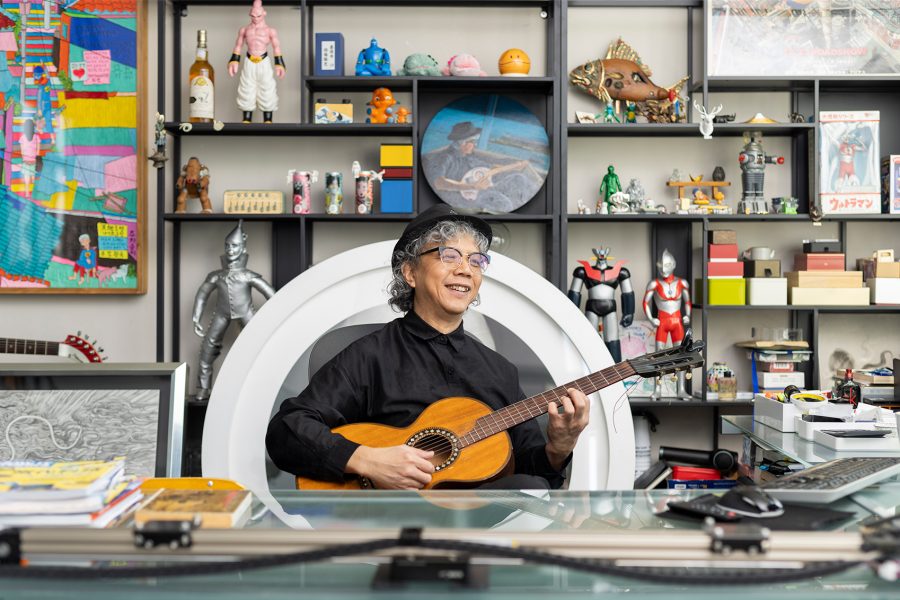
A large orange robotic arm glides through the air, dipping its calligraphy brush into water, then ink, before bringing it to rest upon a large sheet of rice paper. The arm makes a small, calculated stroke – pauses – then repeats the process. To its right, a monitor displays two browsers of code.
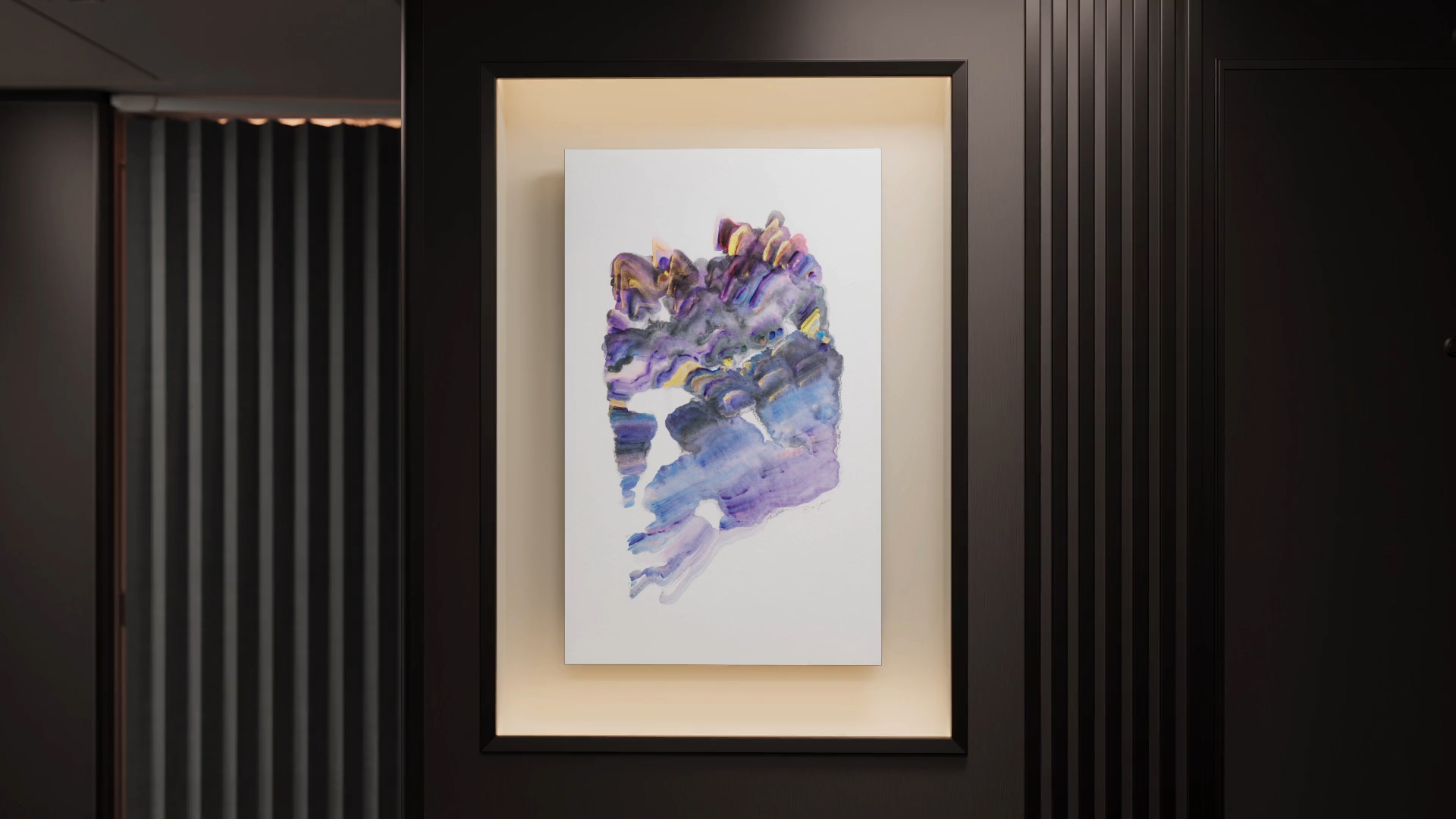
This is A.I. Gemini, the world’s first artificial intelligence ink artist. With graceful precision, it paints a landscape based on data fed to it by its creator, Victor Wong , who is stood beside, sipping coffee.
“We exchange ideas. It’s kind of an interaction between machine and human – a collaboration,” says Wong. “Gemini cannot create its own pictures; I cannot draw pictures like that. It’s a combination of both the AI world and the real world.”
Their first ever ink painting, Escapism 0001, was collected by Cathay Pacific and featured on its inflight magazine cover in January 2019. Since then, two additional pieces – Paramita 02 and Paramita 04 – have been selected for our Gallery in the skies, in which a series of artworks will be displayed in the new Business cabins of Cathay Pacific’s Boeing 777-300ER aircraft. Each piece in the Cathay collection offers a unique perspective on the natural environment – real or imagined.
While Wong has programmed Gemini to create landscapes based on geographical data – statistics about rainfall, erosion and tectonic forces – there's another element Wong introduced into his equation: randomness. Once the data goes in, Wong doesn’t know what will come out. Each painting is truly unique.
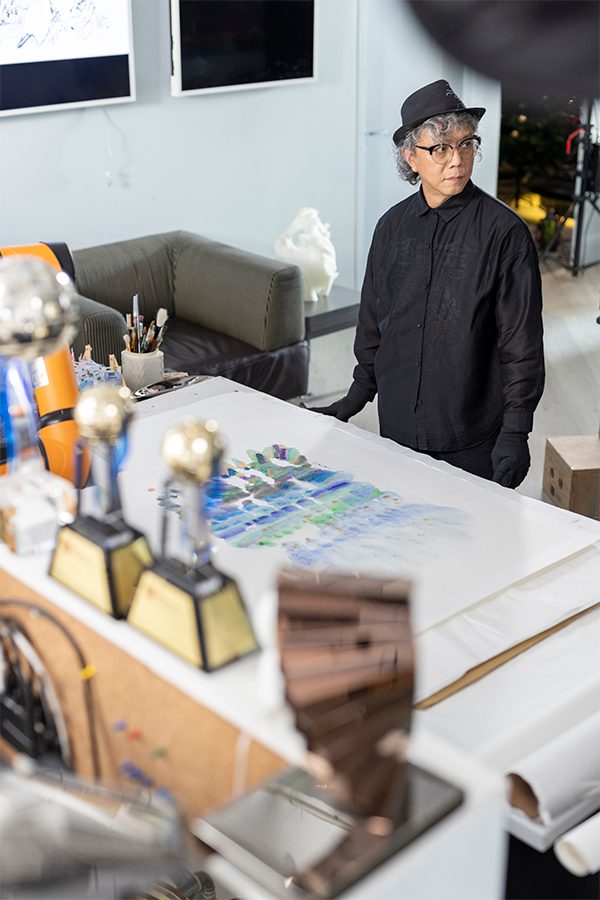
Credit: Mike Pickles
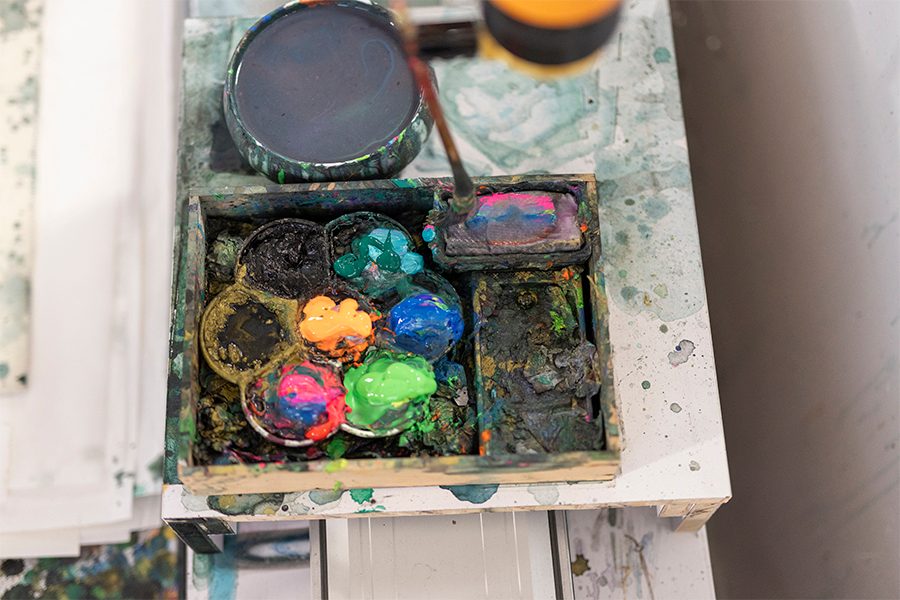
Credit: Mike Pickles
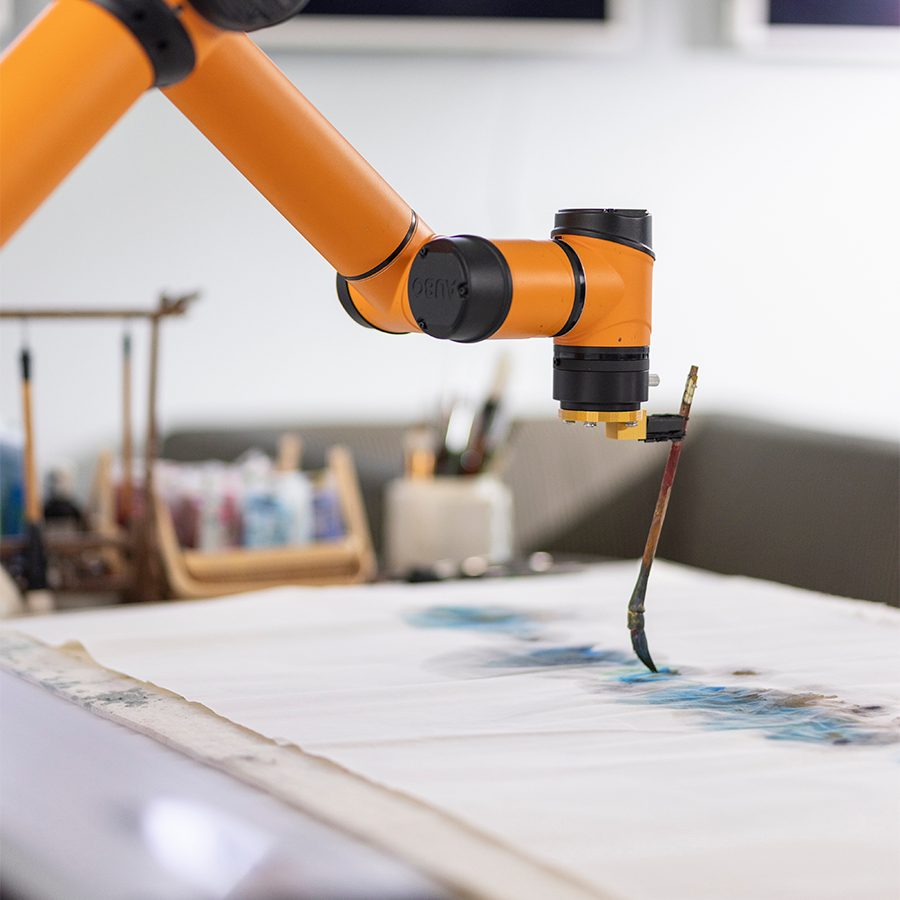
Credit: Mike Pickles
“Sometimes it’s normal, sometimes it’s so chaotic – and I love it,” he says. “ To me, nature is some kind of chaos, but it somehow also follows an order. Order and chaos, chaos and order, order and chaos intertwine – then you find out something.”
Wong describes his childhood as an “accumulation of curiosity”. Growing up, his father ran a paper craft shop in Yau Ma Tei, where they would use bamboo and paper to create offerings for funerals. There, Wong was encouraged to make his own lanterns, a practice of “thinking in three dimensions” that he credits to paving his career path. After studying engineering in Seattle, Wong returned to Hong Kong and created one of the city’s first computer animated TV commercials in 1991. He then launched a visual effects production company, vfxNova , and has since produced more than 800 TV ads and designed special effects for more than 100 films in Hong Kong and Hollywood. Around two dozen film awards adorn his office.
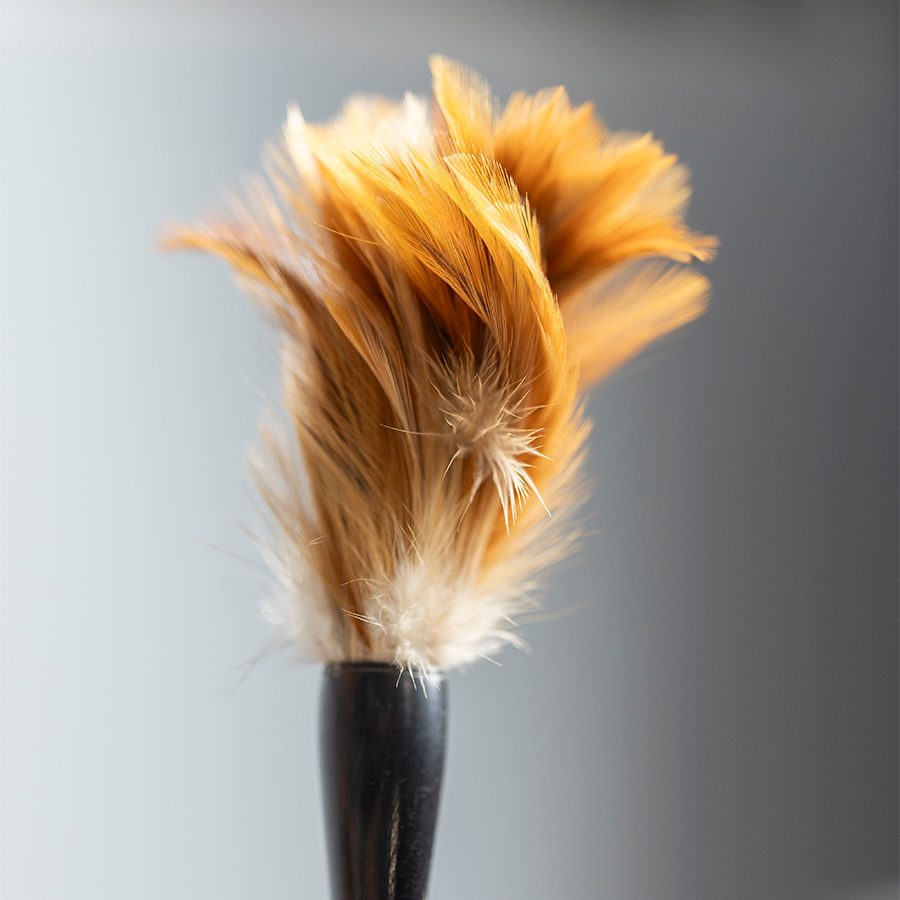
Credit: Mike Pickles
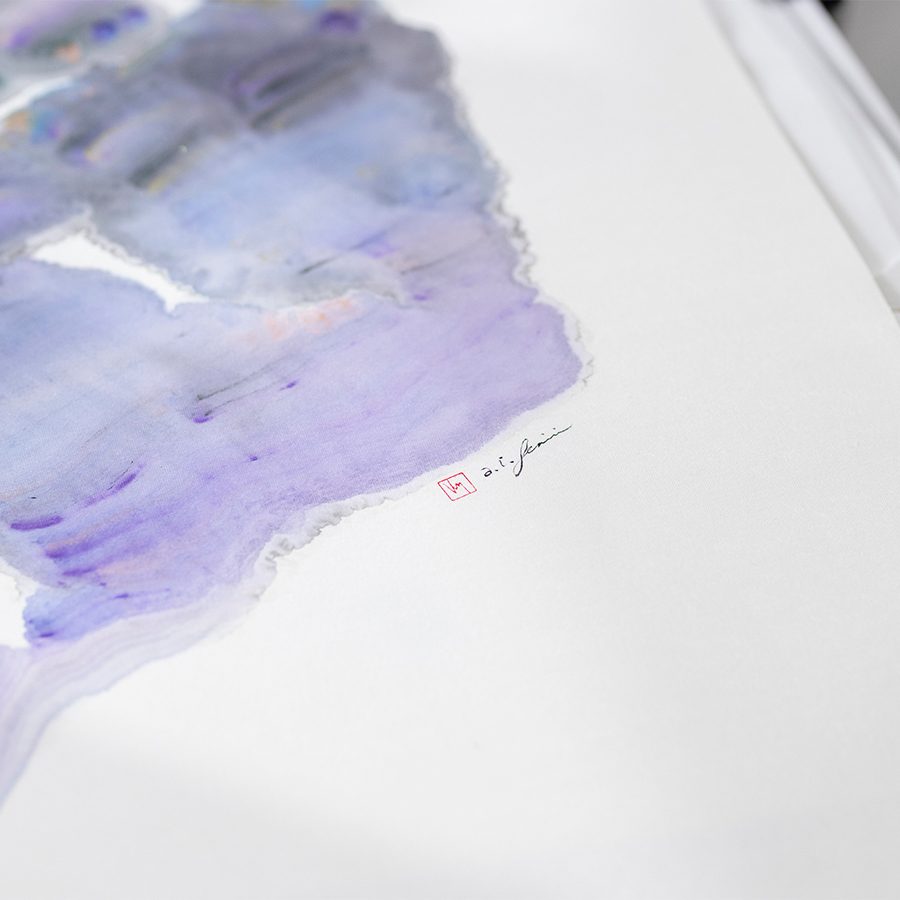
Credit: Mike Pickles
It was an animation project for the Hong Kong Jockey Club that inspired Wong to create Gemini. Commissioned to digitise a series of traditional ink paintings, he delved further into the art form, fascinated by how master ink artists painted landscapes. “Using their heart, their feelings about the scenario, the environment, and nature, they’d go back to the studio and draw what they saw in their mind. I call it ‘mindscape’,” he says. Then, Wong read about an auction at Christie’s that saw an AI-generated artwork sell for US$400,000. His curiosity was piqued: “Can AI create a mindscape, rather than just copy a picture?”
The idea for the Paramita series stemmed from a documentary in which archaeologists looked at a cross-section of a cliff, explaining how each of the layers of sediment indicated a different time-period. Seeing this, Wong sought to create his own mindscape: Gemini’s brushstrokes of traditional black ink and colourful acrylic paint would represent millions of years' worth of natural events.
Gemini was never taught colour theory, nor were any restrictions or limitations coded into its programme. “Some of the colours coming back, you haven’t seen before,” Wong says. “People love it, and people hate it. And I say ‘okay, there’s something special here’. Because if it’s just normal, it’s nothing, people don’t talk about it. But even when people hate it, why do you hate it? ‘Oh, I don’t know, there’s no emotions’. Okay, fine. But let’s debate later.”
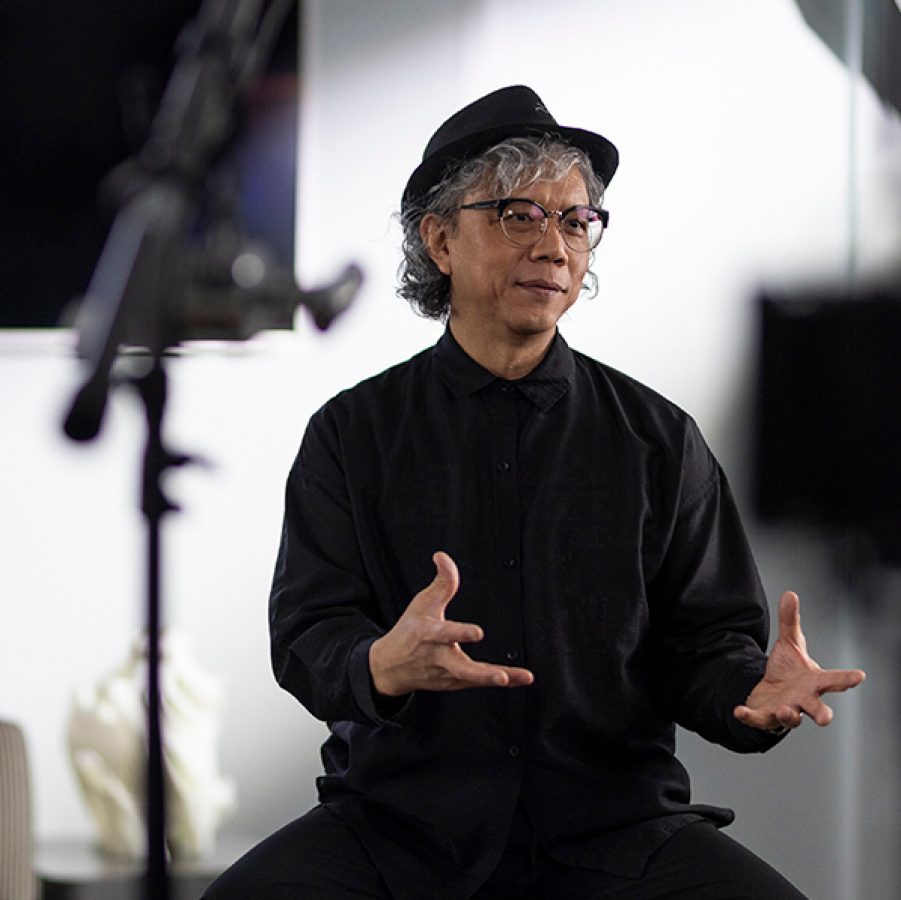
Credit: Mike Pickles
The topic of AI has not been without its fair share of debate. And, as with the introduction of any new technology to art, there are strong arguments on both sides. “Art itself is created by humans, defined by humans. I can define this as art too – it's a combination of humans and machines creating a new form of art,” says Wong. “That’s why Gemini is special. People don’t expect the pictures Gemini paints because it’s so organic. And also, so mechanical. There’s contradiction in the pictures and that arouses people’s interests.”
This contradiction is designed to call viewers to see a different perspective. “‘Paramita’ means ‘the other side of the world’ in Buddhism – there's always dualism,” says Wong. It’s in the interplay of contrasts – order and chaos, organic and mechanical, traditional and new – that you discover something truly fascinating.
Just as an aircraft carries passengers to new destinations, Wong aims to transport viewers to another world entirely. “When people see my artwork on the plane. They will see deep inside and find another dimension – because that’s their destiny on the other side,” he says. “And those two pictures really have that feeling.”
More inspiration
- China – the Chinese Mainland, Hong Kong SAR, Macao SAR and Taiwan Region
- Hong Kong SAR - English
- Chinese Mainland (China) - English
- Taiwan, China - English
- 香港特別行政區 - 繁體中文
- 中国內地 - 简体中文
- 中國台灣 - 繁體中文
- Africa
- South Africa - English
- Asia
- Bangladesh - English
- Korea - English
- Singapore - English
- Cambodia - English
- 한국 - 한국어
- Sri Lanka - English
- India - English
- Malaysia - English
- Thailand - English
- Indonesia - English
- Maldives - English
- ประเทศไทย - ภาษาไทย
- Indonesia - Bahasa Indonesia
- Myanmar - English
- Vietnam - English
- Japan - English
- Nepal - English
- Việt Nam - tiếng Việt
- 日本 - 日本語
- Philippines - English
- Australasia
- Australia - English
- New Zealand - English
- Europe
- Belgium - English
- France - Français
- Россия - Русский
- Denmark - English
- Ireland - English
- Schweiz - Deutsch
- Deutschland - Deutsch
- Italia - Italiano
- United Kingdom - English
- España - Español
- Nederland - Nederlands
- Middle East
- Bahrain - English
- Saudi Arabia - English
- United Arab Emirates and Qatar - English
- Israel - English